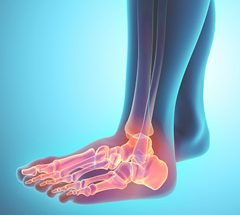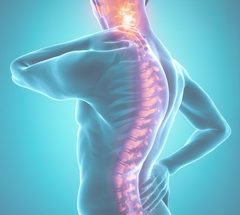Spine Radiofrequency Neurotomy
Learn about a procedure that can reduce chronic pain in your spine.
Radiofrequency neurotomy involves inactivating (ablating) a nerve by heating it with a special needle using radiofrequency energy. The procedure reduces pain by ablating the nerve that is transmitting pain from a chronic pain-generating source. Pain generating structures for which this technology has been successfully used include the facet joints of the cervical, thoracic and lumbar spine, as well as the sacroiliac joint.
When will the procedure take effect and how long will it last?
Pain relief may be delayed up to two weeks following the procedure. A good effect lasts longer than six months. The nerve will re-grow, though it may take months to years before the pain comes back. If it does, the procedure can be repeated.
Will there be a risk of paralysis?
The procedure only targets sensory nerves that carry pain messages, so there is little chance of damage nerves controlling muscle function. The risk of damaging spinal nerves branching out of the spinal canal is very remote.
What will happen to me during the procedure?
You will lie on your stomach on a procedure table with pillows positioned for optimal comfort. After the back area is prepped with special soap, the healthcare provider will inject a local anesthetic numbing medicine over a small area of the skin, which may sting for a few seconds. Then, he or she will insert a special needle and guide it using X-ray to the proper location of the nerve to be ablated.
After positioning, the needle may be stimulated to verify that the location of the needle is near the targeted nerve. The provider then injects more local anesthetic before the radiofrequency ablation to minimize any discomfort associated with the lesioning. You may experience minor back discomfort. If you feel shooting leg pain during lesioning, let your doctor know.
What are the possible side effects of the injection?
- Bruising
- Flushing
- Temporary slight numbness
- Headache if dural puncture occurs (2% risk)
- Temporary (24-48 hours) flare-up of back pain
- No change in your pain
- Reaction to the local anesthetic or steroid (rare)
- Infection (rare)
- Collapsed lung (rare, only a risk in the cervical and thoracic regions)
- Spinal cord or brain injury (rare, only a risk in the cervical and thoracic regions)
What should I do after the procedure?
We prefer that you have a ride home. If you do, you can leave right after the procedure if you feel normal. If you do not have a ride home and have not had any oral or IV sedating medicine, you can drive yourself home if, after being observed for 30 minutes following the injection, you do not develop any neurological symptoms.
The injection of anesthetic and steroid before the ablation counteracts irritation caused by the procedure, but there may be some soreness for a few days after the procedure. Your doctor may prescribe ice and mild analgesics.
Your healthcare provider who referred you for the injection will assess the outcome of the procedure with you to determine the future course of your treatment.
General instructions before and after the procedure
- Do not eat anything for six hours prior to the procedure
- Take your routine medicines before the procedure (such as high blood pressure and diabetes medicines). Do not take aspirin and all anti-inflammatory medicines such as Motrin® (ibuprofen), Aleve® (naproxen), Relafen® (nabumetone), or Daypro® (oxaprozin). These should be stopped five days before the procedure and can be restarted the day after the procedure. Unless directed otherwise by your physician, you may take other forms of pain medication (e.g., acetaminophen, narcotics).
- If you are on Coumadin® (warfirin) or heparin, you must call our office to determine how long these medications should be stopped before the procedure and whether a blood draw is necessary. Typically, you will stop taking Coumadin for four days prior to the injection.
- If you are an insulin-dependent diabetic, let your injection doctor know. Your insulin dose may be adjusted depending upon the time of day your injection is scheduled. After the procedure, your blood sugar may be temporarily elevated for a few days due to the steroid.
Because this is a non-urgent medical procedure, it is important that you do not have an acute infectious illness at the time of the injection. If you are concerned about your fitness for the injection, please call your healthcare provider.

















